The bathtub is an essential component of the bathroom, and its lifespan has always been a focal point of concern for many homeowners. Whether it's the financial loss caused by bathtub damage or the hassle of replacing a bathtub, both scenarios can be quite troubling. Therefore, many homeowners hope to choose a bathtub that is more durable and has a longer lifespan. In fact, the lifespan of a bathtub is closely related to its manufacturing materials and daily usage habits. In this article, Giving Tree Home will introduce you to the lifespans of several common types of bathtubs and provide some effective methods to help you extend the lifespan of your bathtub.
Lifespan of Different Bathtub Materials
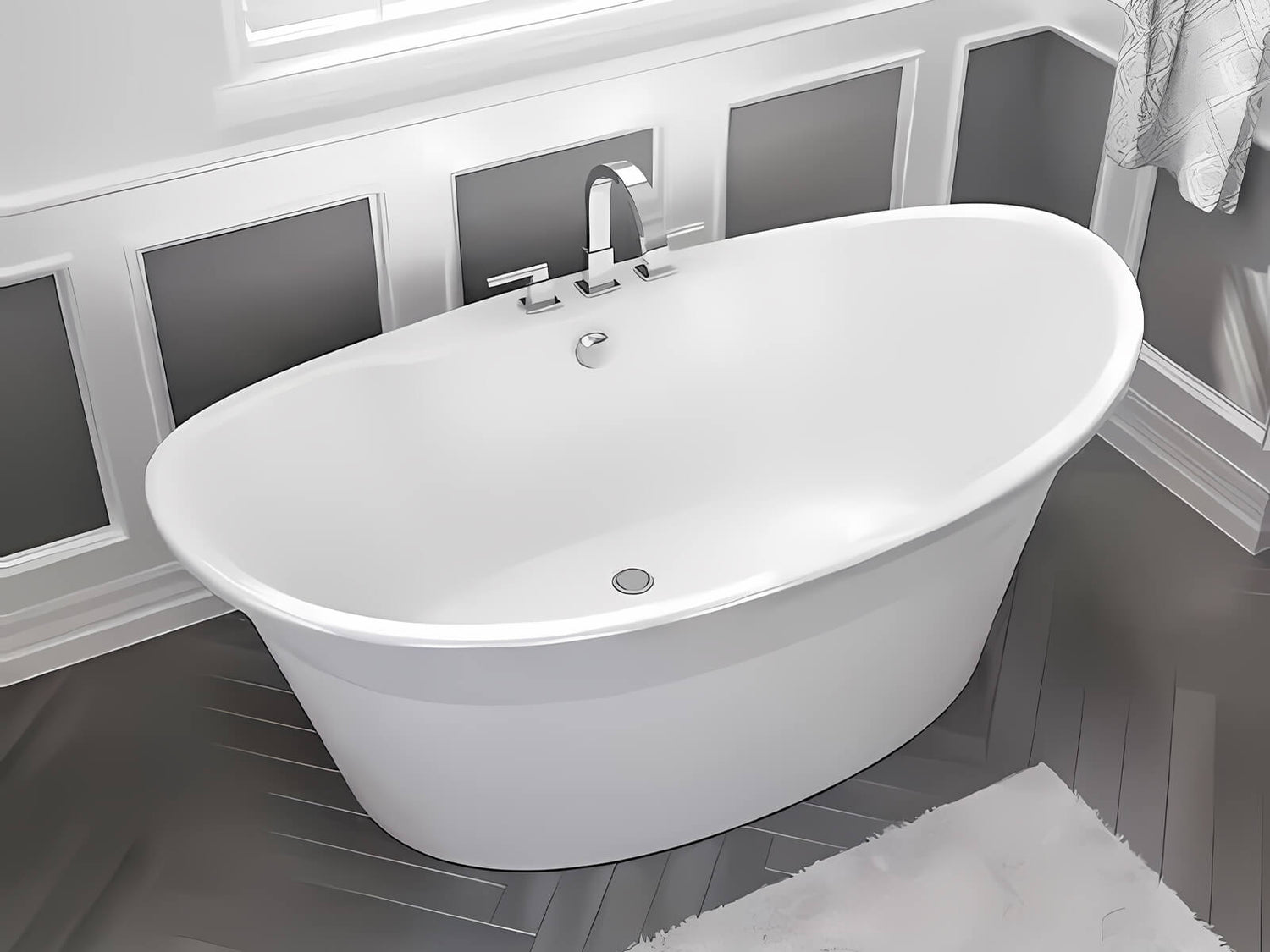
Fiberglass
Although fiberglass bathtubs are a mainstream option, their main advantage lies in their price rather than durability. Typically, fiberglass bathtubs are treated with epoxy resin on the surface, which significantly reduces manufacturing costs. However, this also means that their surfaces are easily scratched, leading to accelerated wear and tear. Additionally, because fiberglass itself is relatively thin, it is prone to bending, cracking, and damage. Therefore, we consider fiberglass bathtubs to have a shorter lifespan, usually around 10 years.
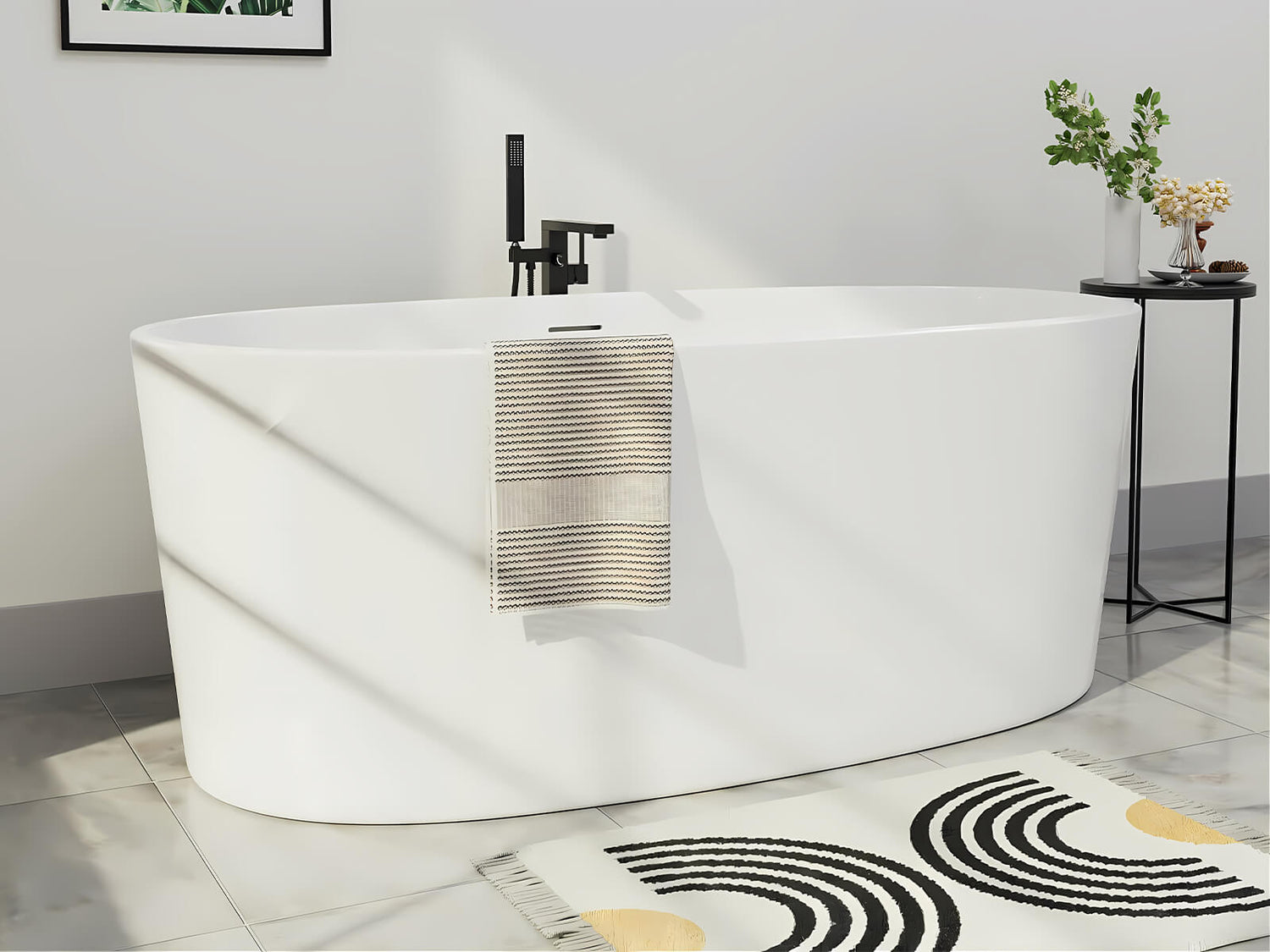
Acrylic
Acrylic, known for its excellent performance and reasonable price, has become one of the most popular bathtub materials and the top choice for many consumers today. In terms of durability, acrylic can even be used for airplane cockpits and aircraft canopies, which speaks to its robustness. Therefore, it is generally believed that acrylic bathtubs can be used for up to 10 to 15 years.
However, it is important to note that acrylic bathtubs typically have a glossy surface prone to noticeable scratches if struck by hard objects, which are difficult to repair and can diminish the bathtub's attractiveness over time.
Further Reading: Complete Guide to Repair Acrylic Bathtub
-
Mokleba 59" Acrylic Modern Bathtub Oval Shape Freestanding Soaking Tub
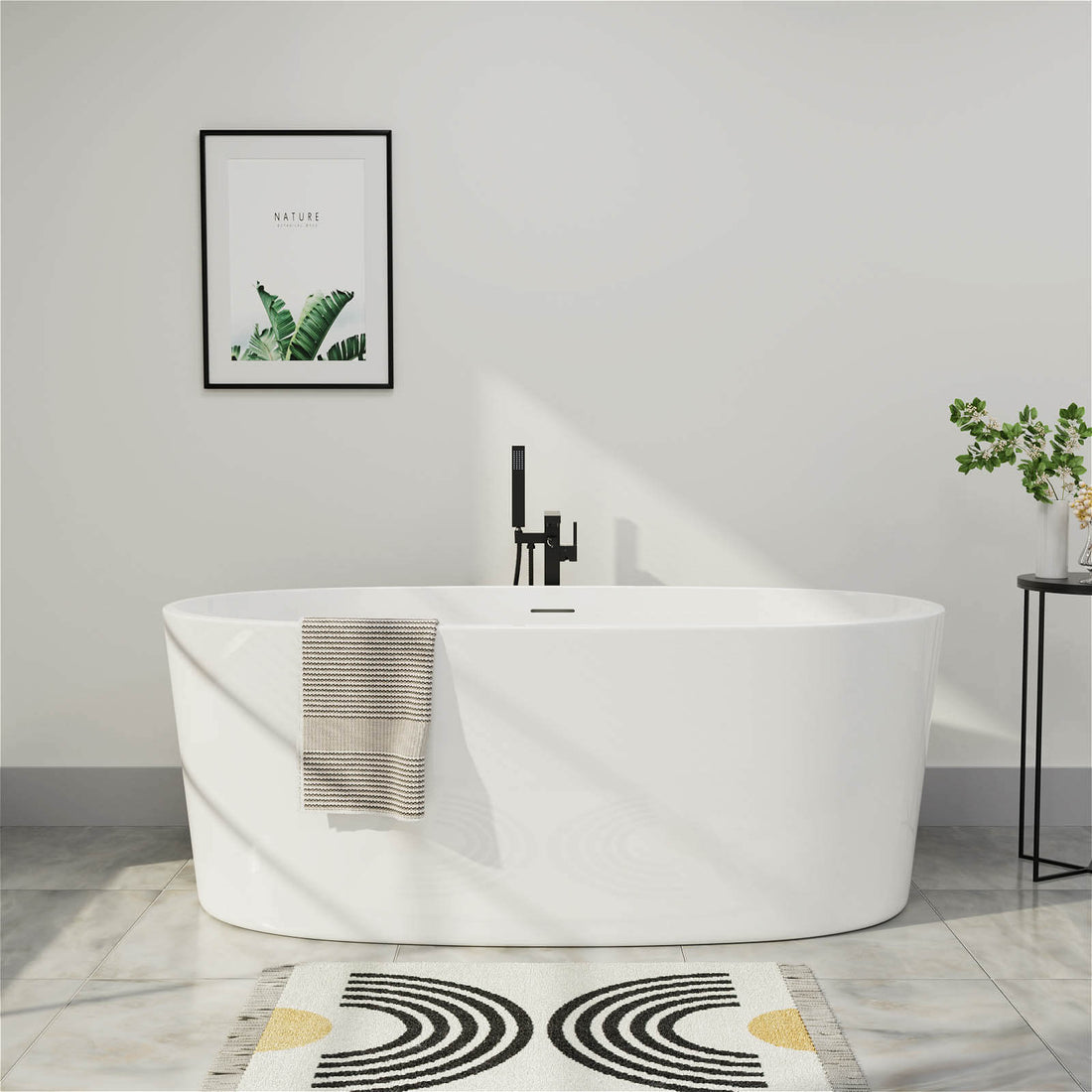
 Mokleba 59" Acrylic Modern Bathtub Oval Shape Freestanding Soaking Tub
Mokleba 59" Acrylic Modern Bathtub Oval Shape Freestanding Soaking Tub- Regular price
-
$756.00 $849.99 - Regular price
-
$2,399.99 - Sale price
-
$756.00 $849.99
Quick view
-
59" Single Slipper Small Size Acrylic Bathtub

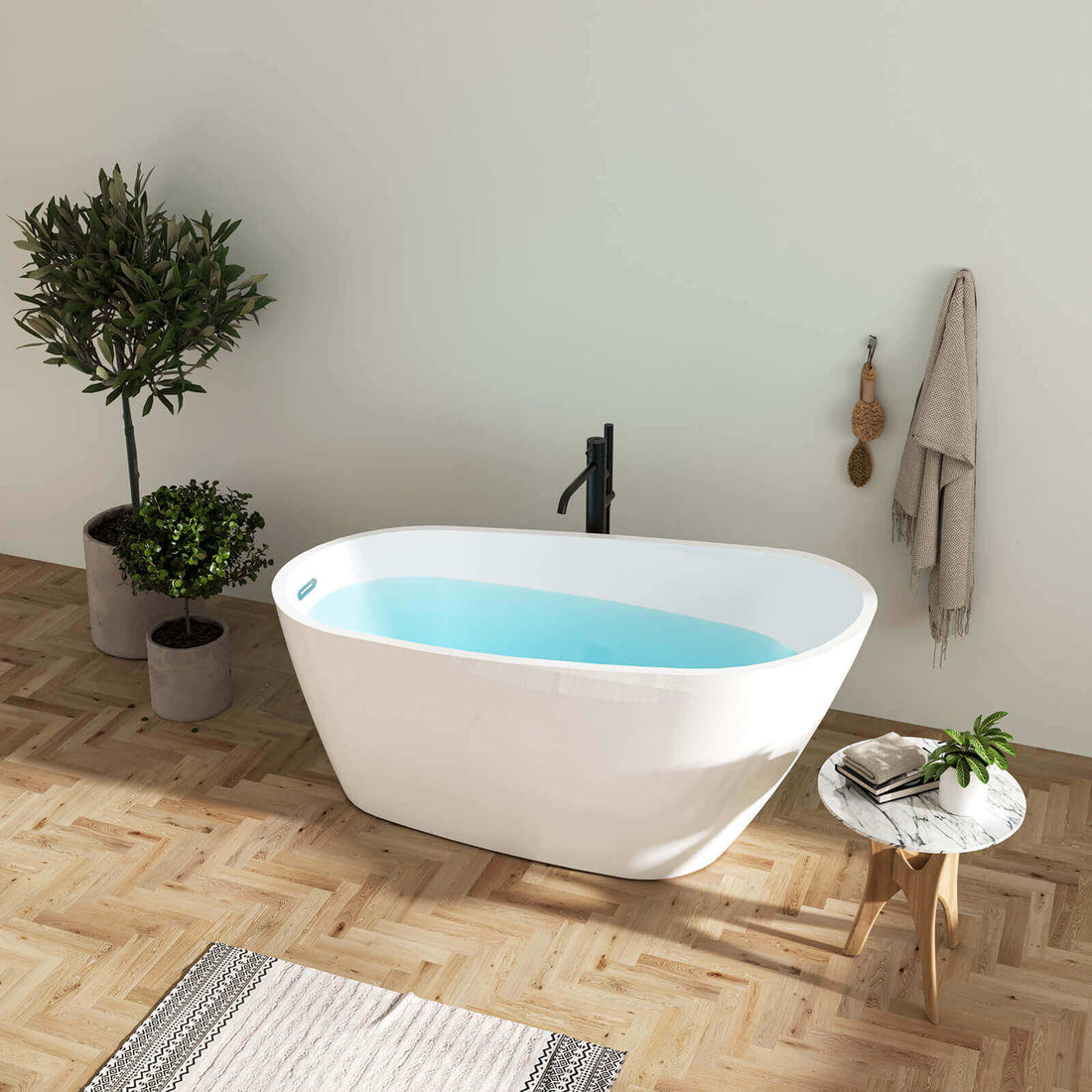 59" Single Slipper Small Size Acrylic Bathtub
59" Single Slipper Small Size Acrylic Bathtub- Regular price
-
$1,274.00 - Regular price
-
- Sale price
-
$1,274.00
Quick view
-
67" Acrylic Freestanding Tub with Chrome Overflow
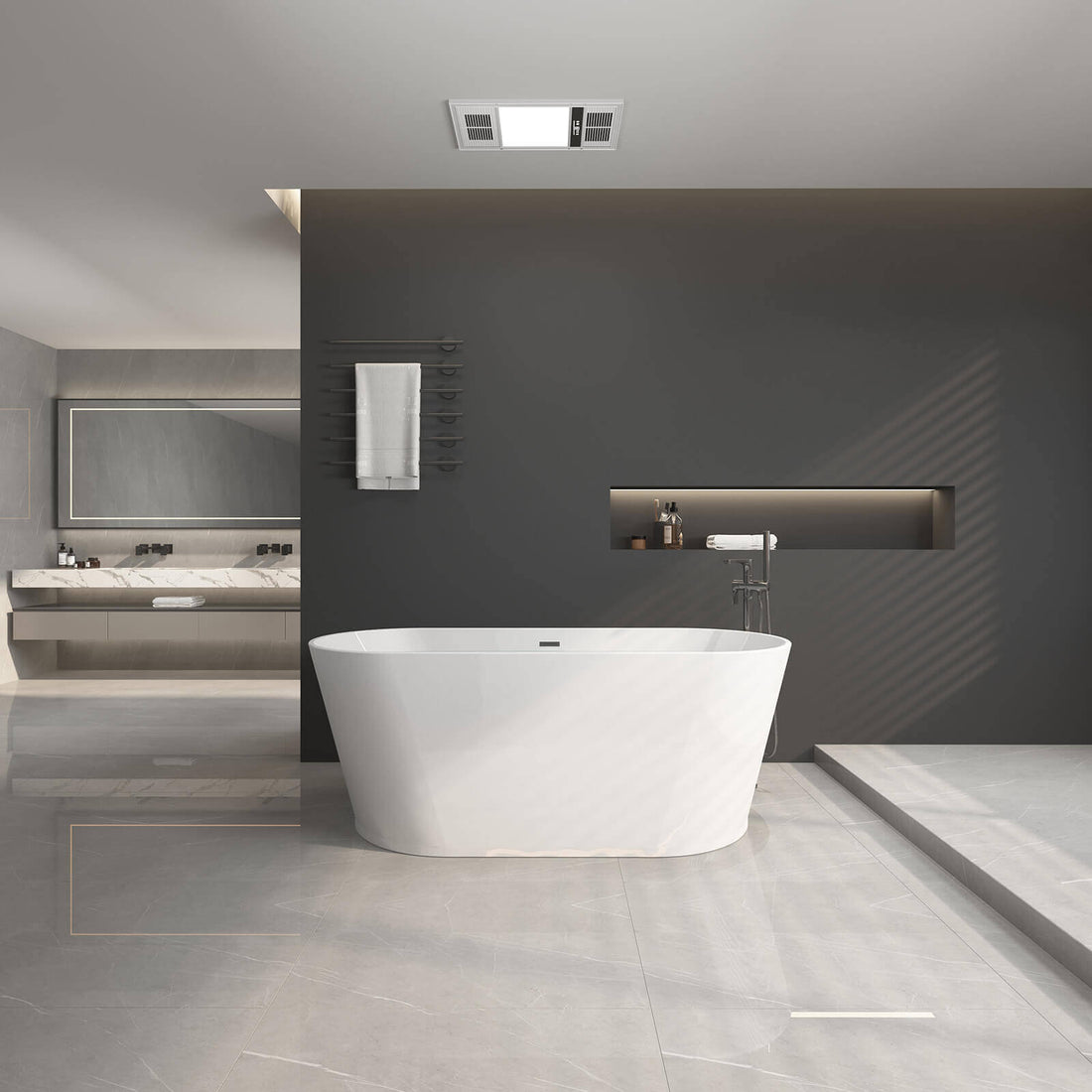
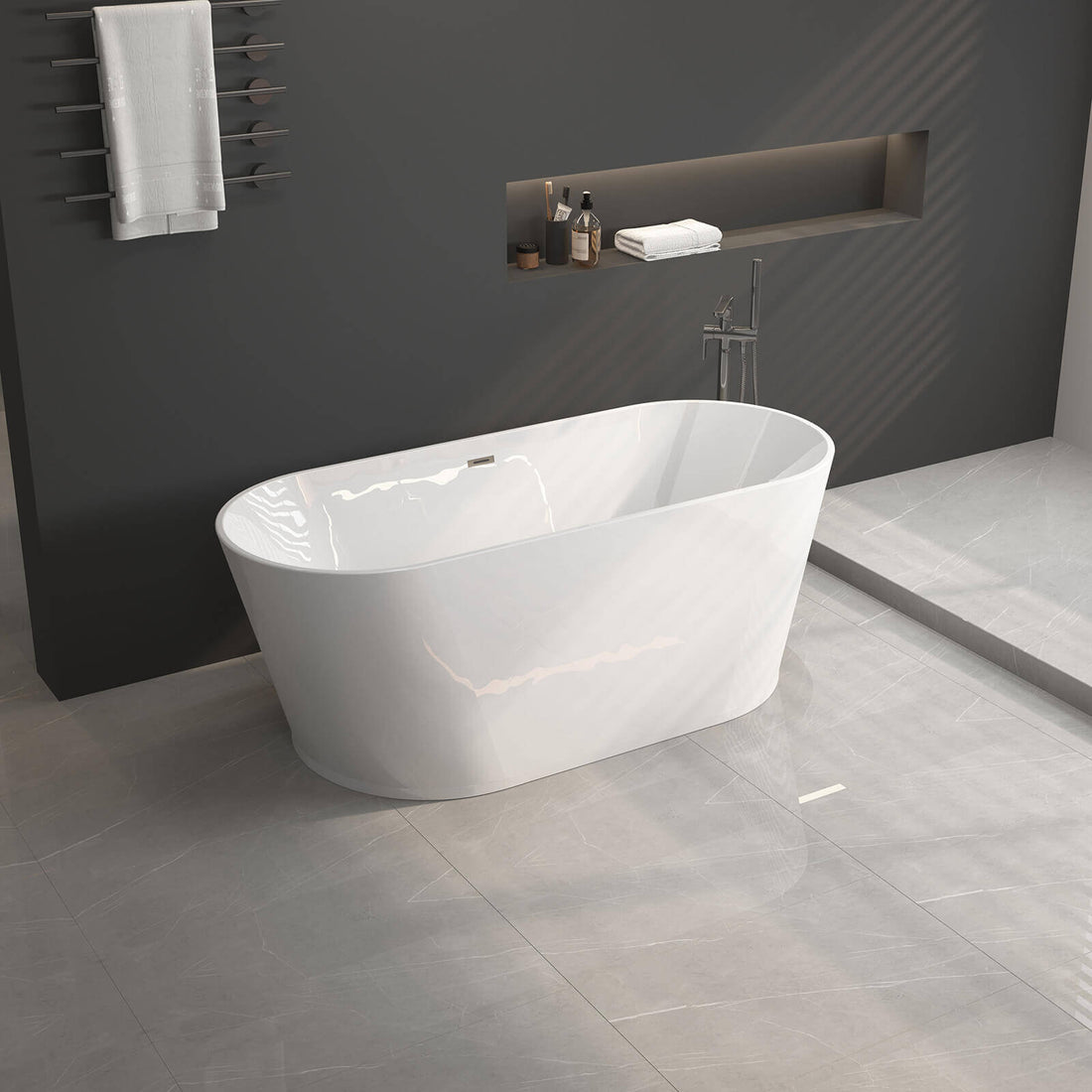 67" Acrylic Freestanding Tub with Chrome Overflow
67" Acrylic Freestanding Tub with Chrome Overflow- Regular price
-
$1,462.00 $1,489.00 - Regular price
-
- Sale price
-
$1,462.00 $1,489.00
Quick view
-
68'' Double Slipper Acrylic Soaking Bathtub
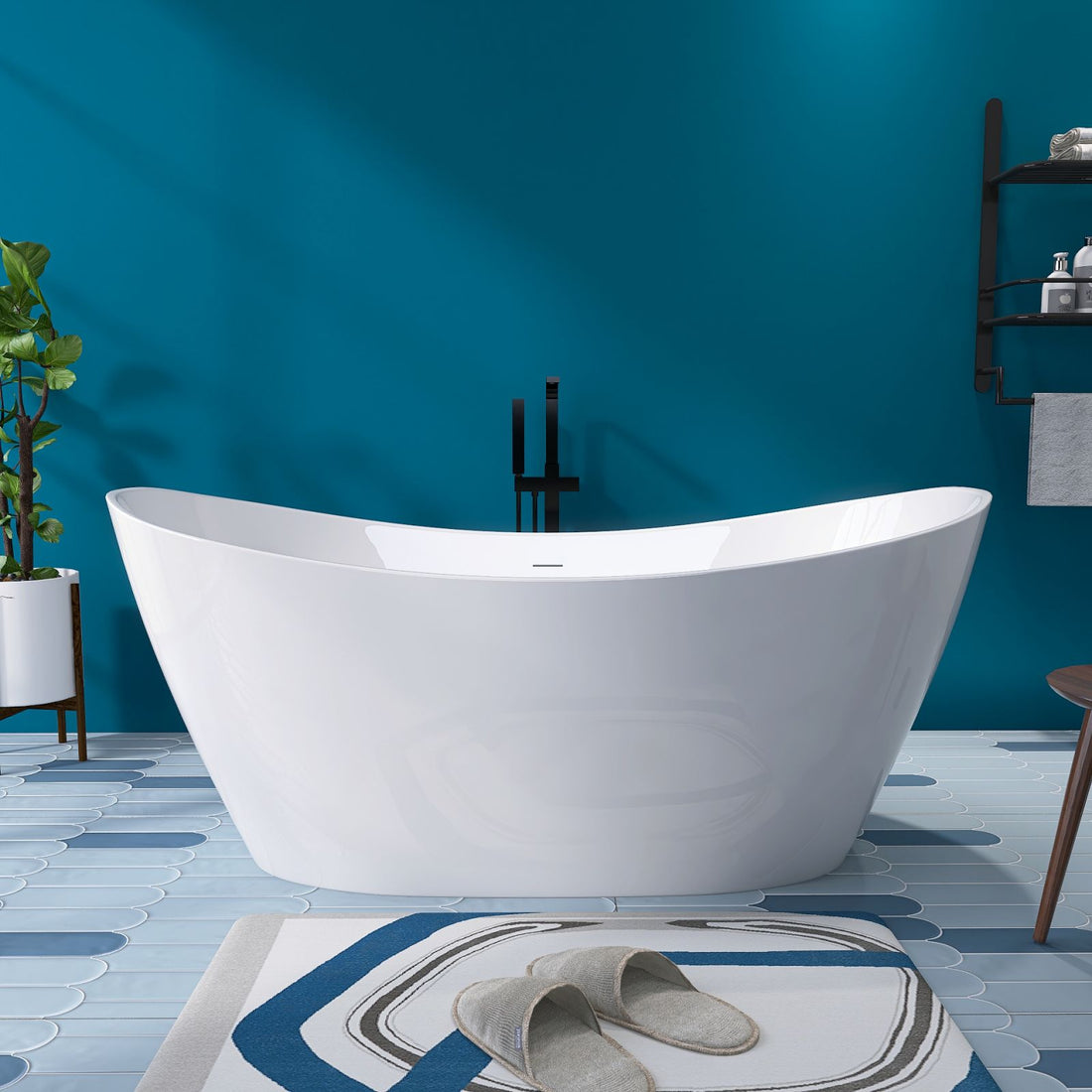
 68'' Double Slipper Acrylic Soaking Bathtub
68'' Double Slipper Acrylic Soaking Bathtub- Regular price
-
$1,479.99 - Regular price
-
- Sale price
-
$1,479.99
Quick view
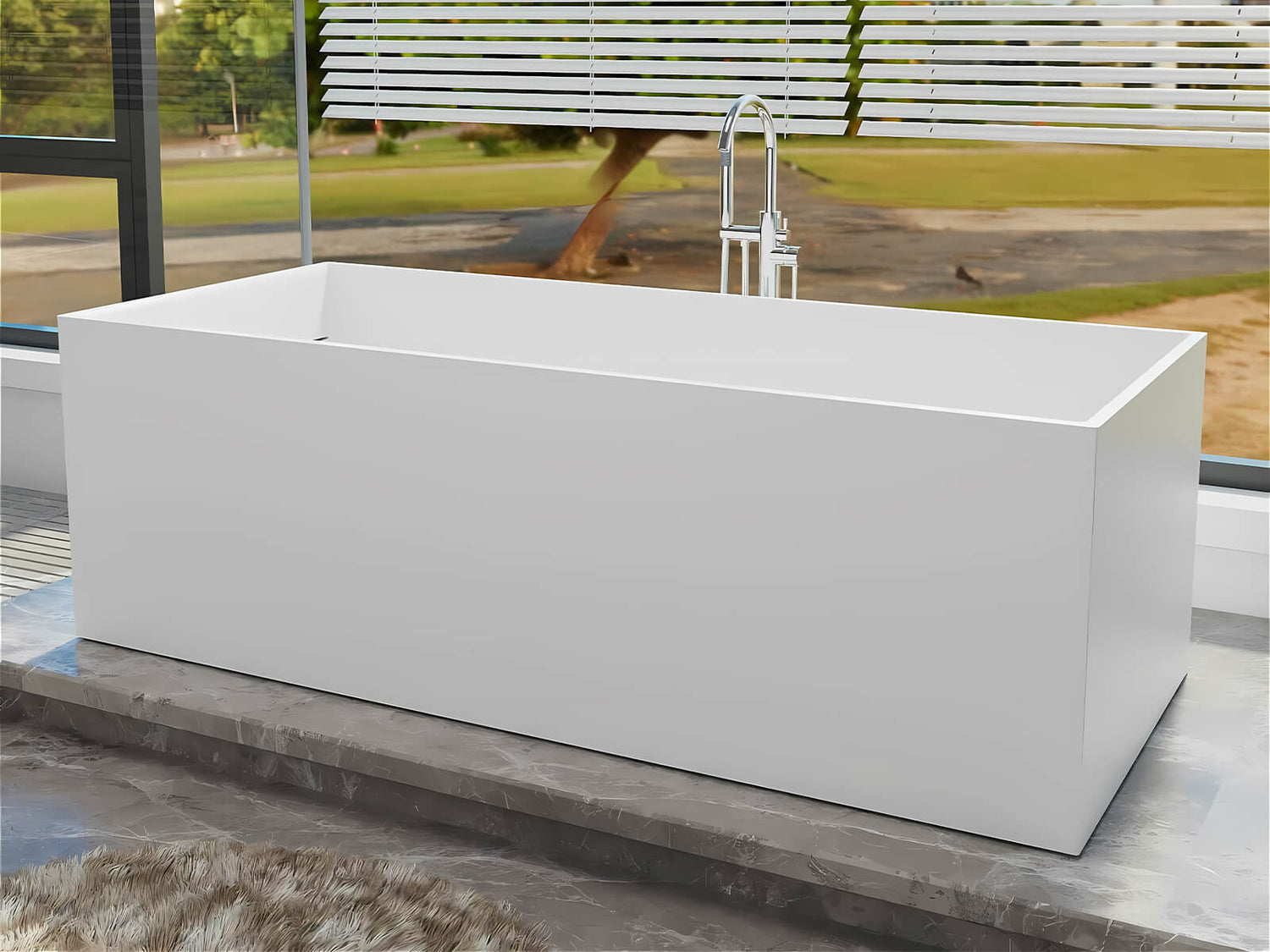
Stone Resin
Stone resin (or solid surface) is an innovative bathtub material that combines the PMMA (Polymethyl methacrylate) of acrylic bathtubs with natural stone powder to form a unique composite material. Unlike the hollow structure of acrylic bathtubs, stone resin bathtubs have a solid structure, making them more robust and typically offering a lifespan of over 15 years.
Further Reading: Acrylic vs Solid Surface Tub
Moreover, even if scratches appear on the bathtub surface, they can be easily sanded and repaired with fine sandpaper to restore the original smooth appearance, ensuring cleanliness and aesthetics over long-term use. However, as a high-end bathtub, stone resin bathtubs are relatively expensive, typically around $1,500, much higher than acrylic and fiberglass bathtubs.
-
67" Freestanding Rectangular Bathtub with Ergonomic Backrest
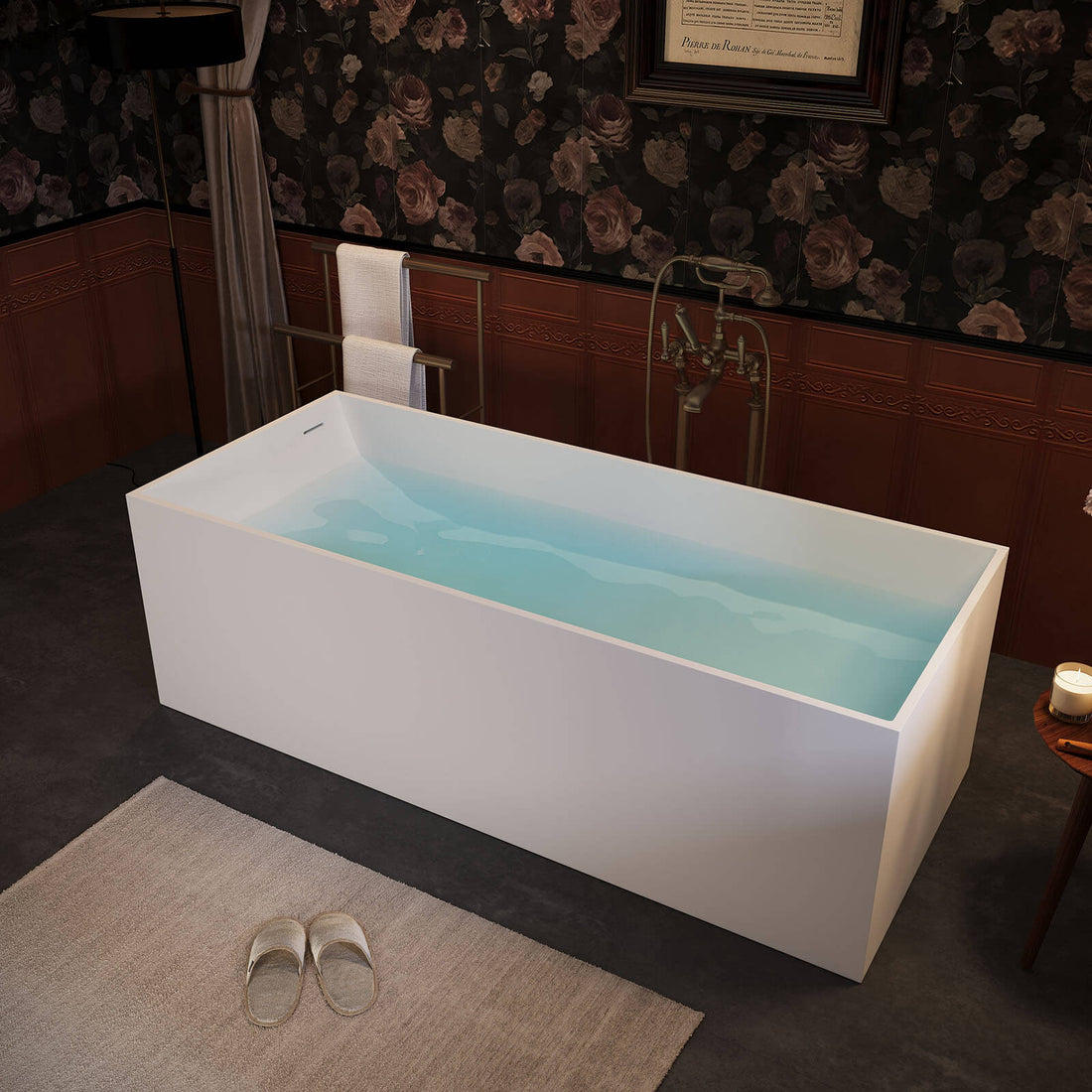
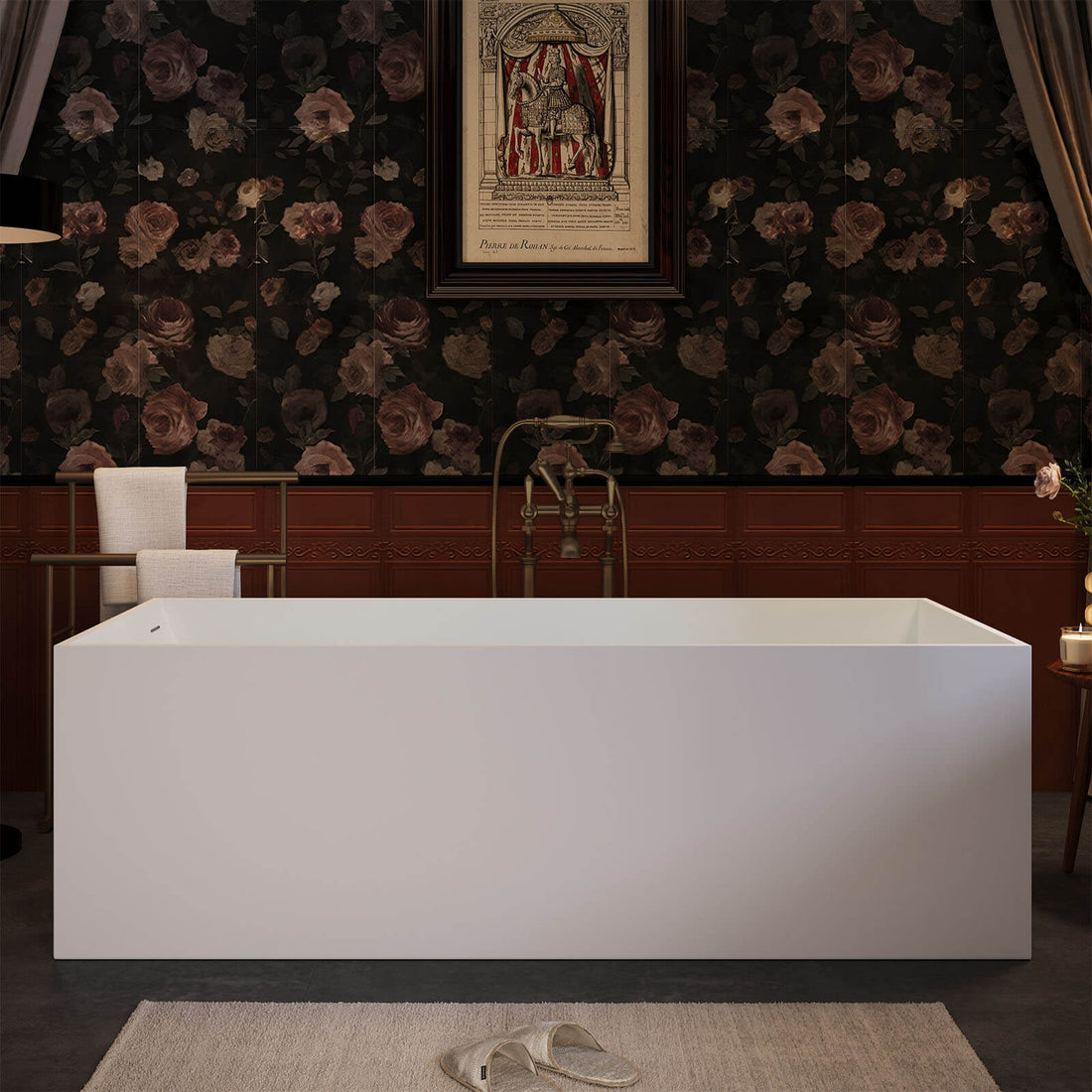 67" Freestanding Rectangular Bathtub with Ergonomic Backrest
67" Freestanding Rectangular Bathtub with Ergonomic Backrest- Regular price
-
$2,299.99 - Regular price
-
$2,999.99 - Sale price
-
$2,299.99
Quick view
-
61" Vintage Pedestal Tub Made from Premium Stone Resin

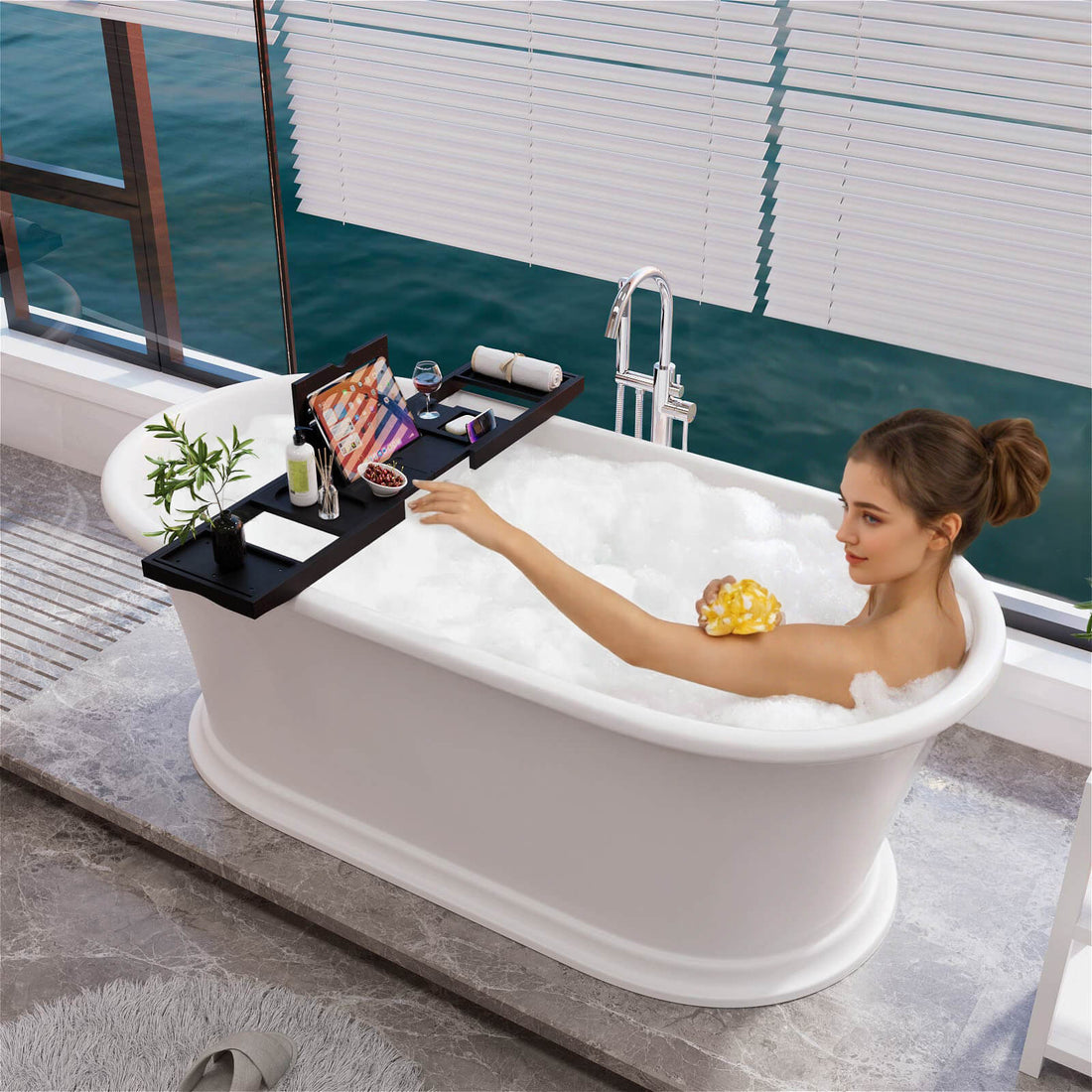 61" Vintage Pedestal Tub Made from Premium Stone Resin
61" Vintage Pedestal Tub Made from Premium Stone Resin- Regular price
-
$2,399.99 - Regular price
-
- Sale price
-
$2,399.99
Quick view
-
59" Oval Solid Surface Brown Soaking Bathtub, Non-toxic, Crack-resistant, Household Chemicals-Resistant
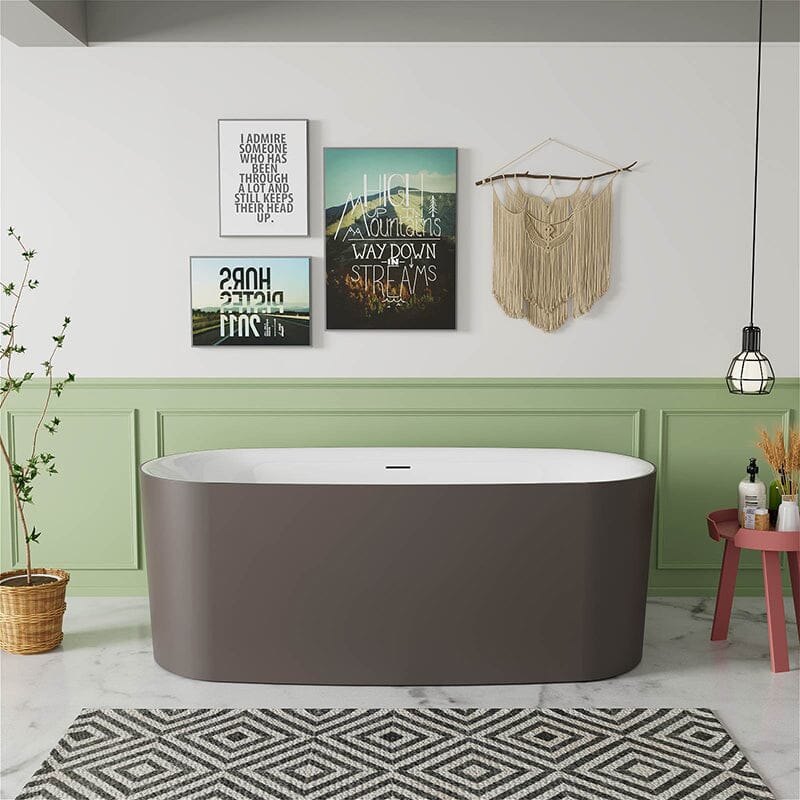
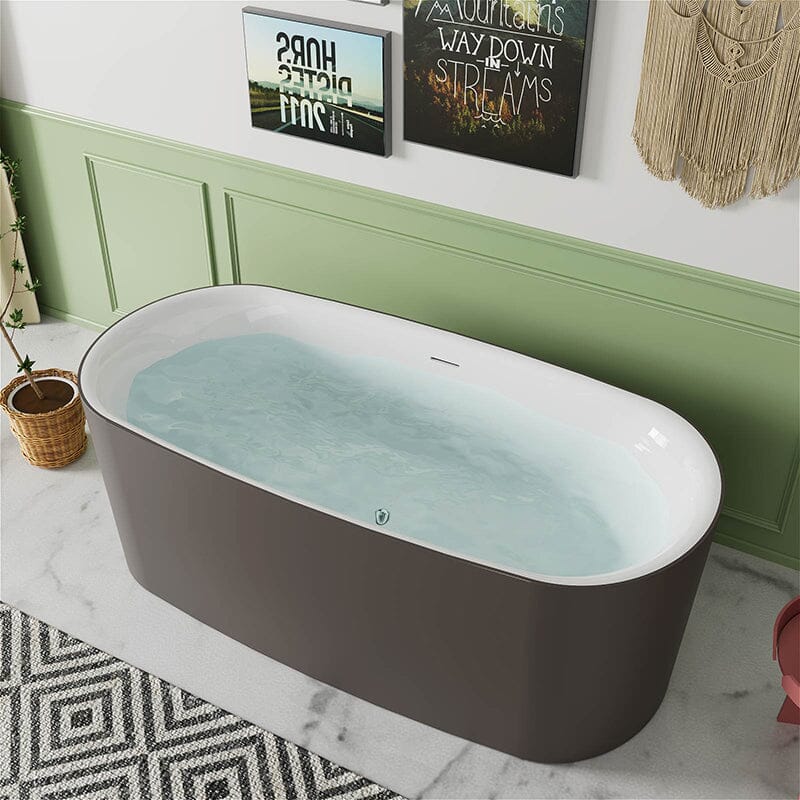 59" Oval Solid Surface Brown Soaking Bathtub, Non-toxic, Crack-resistant, Household Chemicals-Resistant
59" Oval Solid Surface Brown Soaking Bathtub, Non-toxic, Crack-resistant, Household Chemicals-Resistant- Regular price
-
$999.99 - Regular price
-
$1,699.00 - Sale price
-
$999.99
Quick view
-
67'' Egg Shape Solid Surface Freestanding Bathtub with Storage Shelving, Stone Resin Soaking Tub
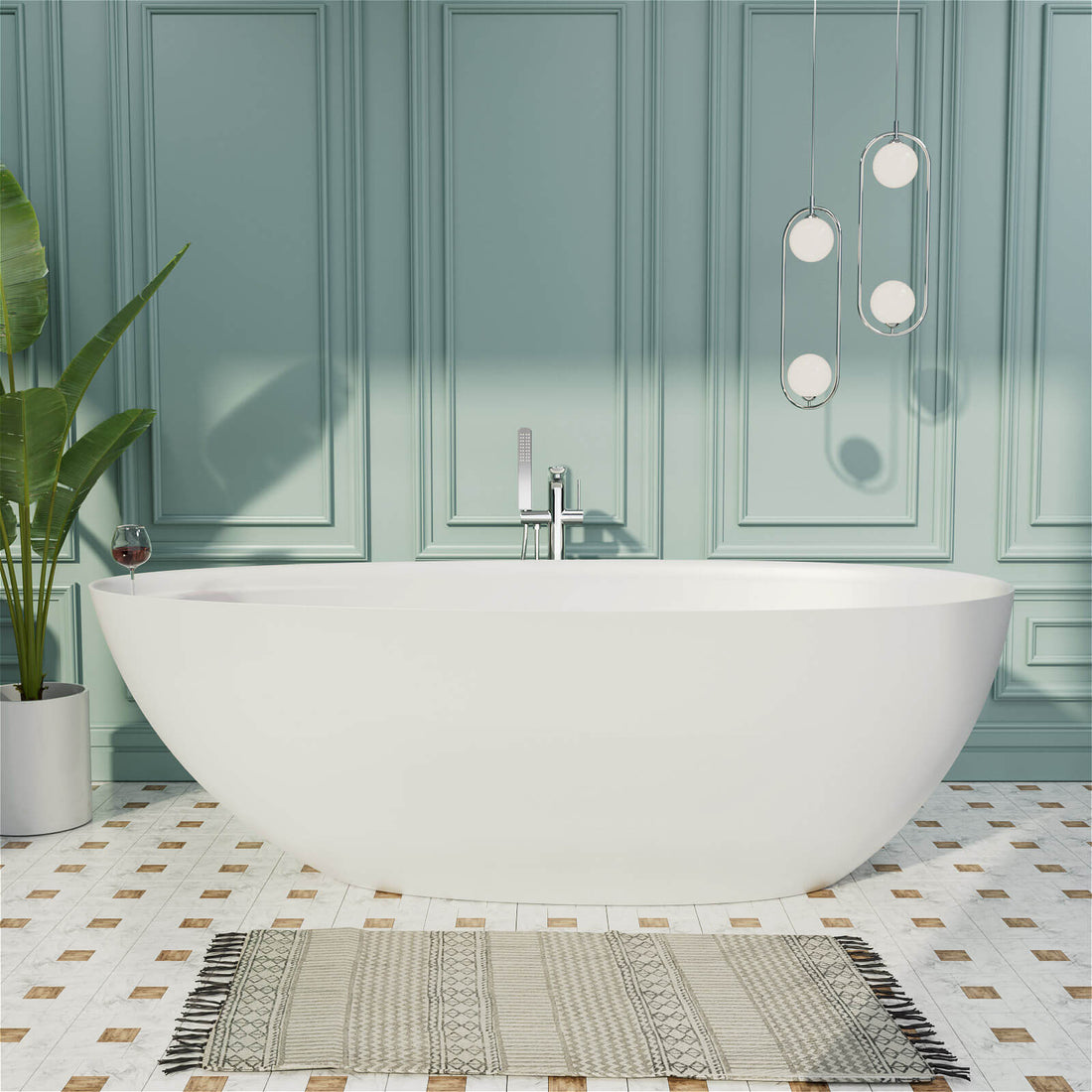
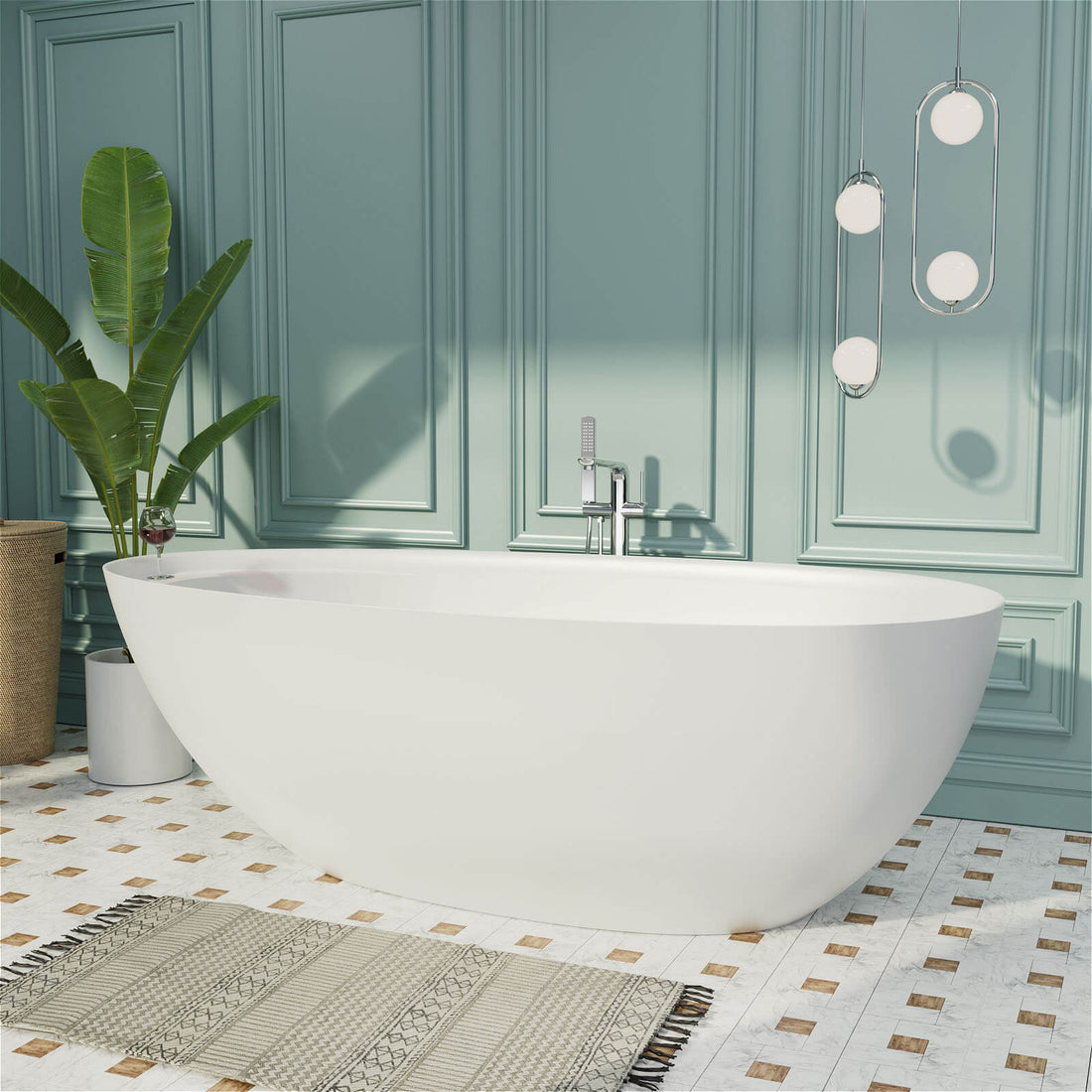 67'' Egg Shape Solid Surface Freestanding Bathtub with Storage Shelving, Stone Resin Soaking Tub
67'' Egg Shape Solid Surface Freestanding Bathtub with Storage Shelving, Stone Resin Soaking Tub- Regular price
-
$1,499.99 - Regular price
-
$2,199.99 - Sale price
-
$1,499.99
Quick view

Cast Iron
When it comes to cast iron bathtubs, durability is the first thing that comes to mind—these are undoubtedly among the longest-lasting bathtubs. Some users have shared on forums that their cast iron bathtubs have been in use for 50 years and still remain in good condition, with the only necessary replacement being the plumbing. This exceptional durability is due to the cast iron material, which has a high carbon content (typically 2%-4% carbon), providing excellent strength, durability, and corrosion resistance.

Jacuzzi
Jacuzzi, a well-known brand synonymous with massage bathtubs, claims that its products have a lifespan of up to 50 years. However, Giving Tree Home holds a reserved stance on this claim. Although we do not specialize in massage bathtub brands, we have sold whirlpool bathtubs and found that these bathtubs are more prone to issues such as clogged jets from foreign objects. Whether Jacuzzi's claim of a 50-year lifespan holds true ultimately depends on consumer experiences.
When Should You Replace Your Bathtub
Tips to Extend Bathtub Lifespan
As mentioned earlier, replacing a bathtub involves significant costs and effort. Therefore, taking some simple steps to extend your bathtub's lifespan is well worth it. Here are some tips:
1. Regular Maintenance
Giving Tree Home always recommends regular maintenance of your bathtub to ensure it remains in optimal condition. For example, simply rinse the bathtub surface with warm water weekly to prevent stain buildup; perform a deep clean once a month using natural cleaners like white vinegar; and conduct a thorough cleaning every six months, including the drain. Ultimately, this does not take much time, but it greatly enhances your usage experience.
Further Reading: The Best Way to Clean a Bathtub
2. Proper Use
This might seem obvious, but most bathtubs fail before reaching the end of their lifespan due to improper use.
Besides using appropriate cleaning agents, avoid using metal objects in the bathtub to prevent scratches and other damage.
Another often-overlooked issue is hard water. Some regions have water sources with excessive minerals, which can negatively affect pipes. Therefore, if you live in an area with hard water, consider installing a water softener to reduce mineral buildup.
Additionally, although bathtubs can handle high temperatures, sudden high heat can damage the bathtub’s surface coating, causing it to age or yellow. The correct approach is to add a small amount of cold water first and then gradually heat the bathtub.
3. Refurbishing
If the bathtub has already started to show issues, refurbishing is an effective way to extend its lifespan. In fact, you can choose to refurbish it yourself, which not only saves costs but also enhances your DIY skills. A refurbished bathtub can typically have its lifespan extended by about 5 years, depending on the quality of refurbishing materials, the expertise of the technician, and the maintenance after refurbishing.
Ending
Understanding the lifespan of your bathtub and taking steps to properly maintain it is key to ensuring both its longevity and functionality. By choosing the right material, following regular maintenance practices, and addressing issues early, you can significantly extend the life of your bathtub, saving both time and money. At Giving Tree Home, we're committed to helping you create a bathroom that blends style with durability. With a little care and attention, your bathtub can continue to provide comfort and reliability for many years to come.
More Ideas
-

Shower Pan Size Guide: Must-Know Dimensions Before You Buy
When planning a shower, most of us immediately think about style and layout. But the details that truly shape your daily experience often lie beneath your feet—that’s where the shower...
-

What’s the Best Material for a Vessel Sink?
When it comes to designing a bathroom, you might not give much thought to the material of your sink. After all, traditional under-mount sinks are usually ceramic, leaving little room...
-

Vessel vs. Undermount Sinks: Which Fits Your Bathroom Best
When you’re updating a bathroom, the sink you choose does more than just hold water—it sets the tone for the entire space. The right style can elevate your vanity, influence...
-

Are Vessel Sinks Still in Style?
If you’re remodeling your bathroom in 2026, you might be wondering: are vessel sinks still in style? For many homeowners, this is a common question when deciding on a bathroom...
-

What Is a Vessel Sink?
If you’re tackling a bathroom renovation for the first time—or you’re simply dreaming up a vanity that feels a little more “you”—stepping into a bath showroom can feel like walking...
-

10 Bathroom Vessel Sink Ideas to Inspire Your DIY Vanity
When it comes to bathroom design, sinks often end up being treated as purely functional fixtures—useful, but not exactly inspiring. That’s why so many vanities end up looking alike: predictable...






















